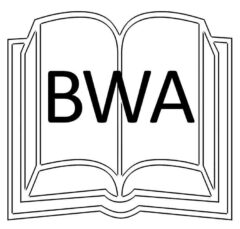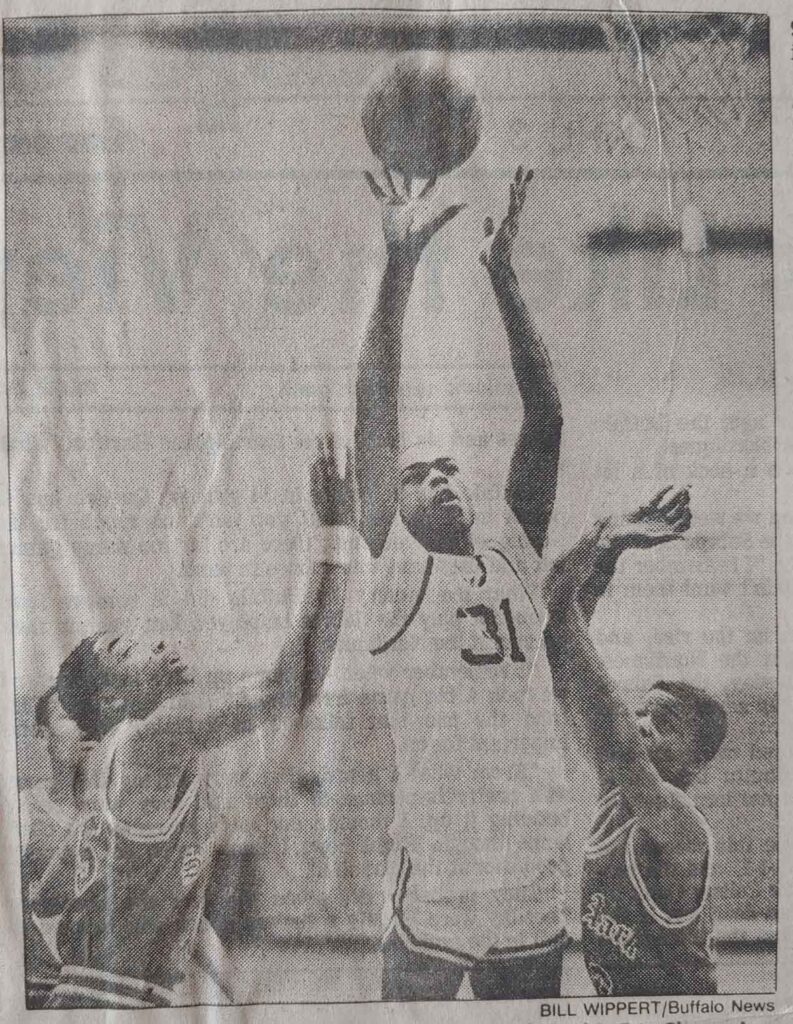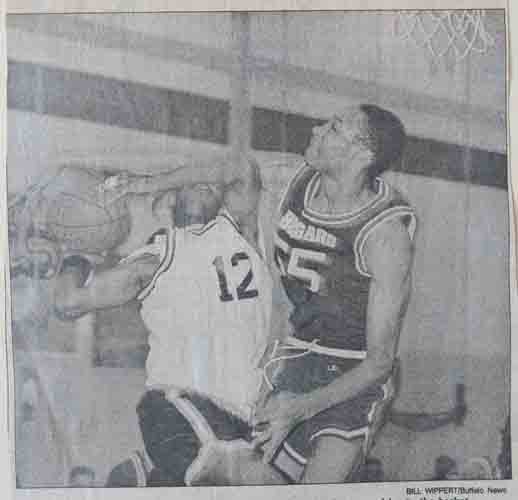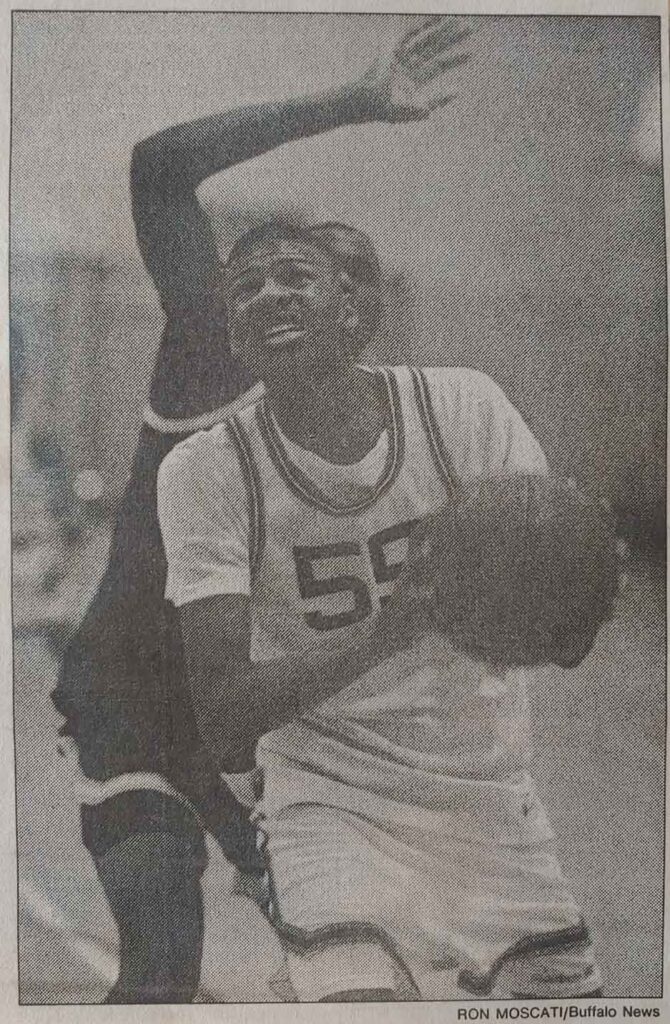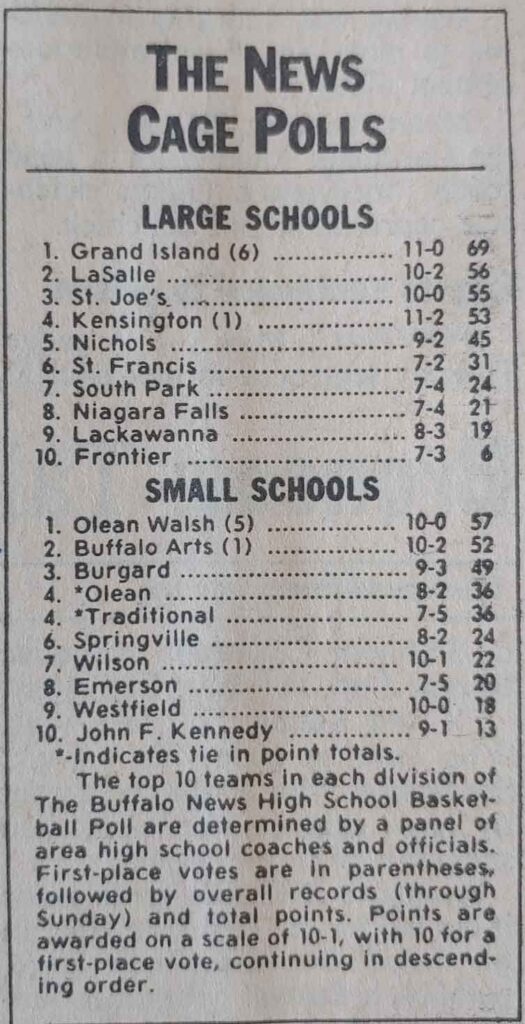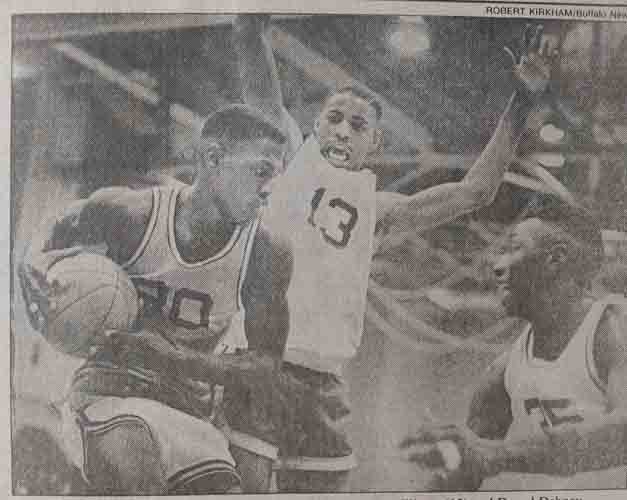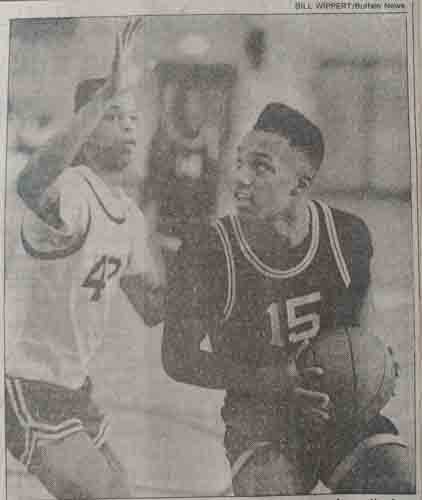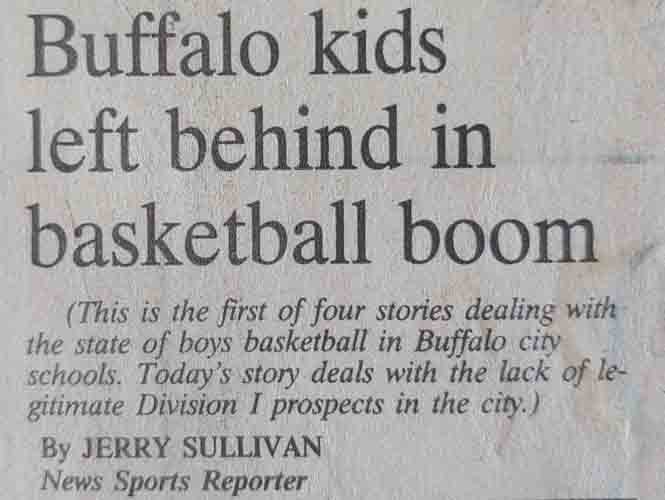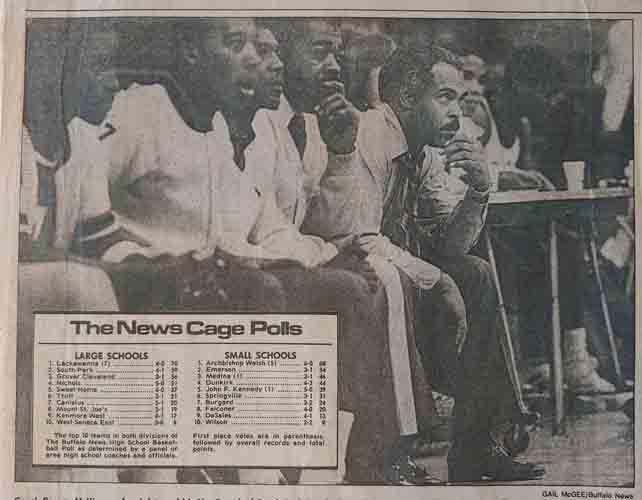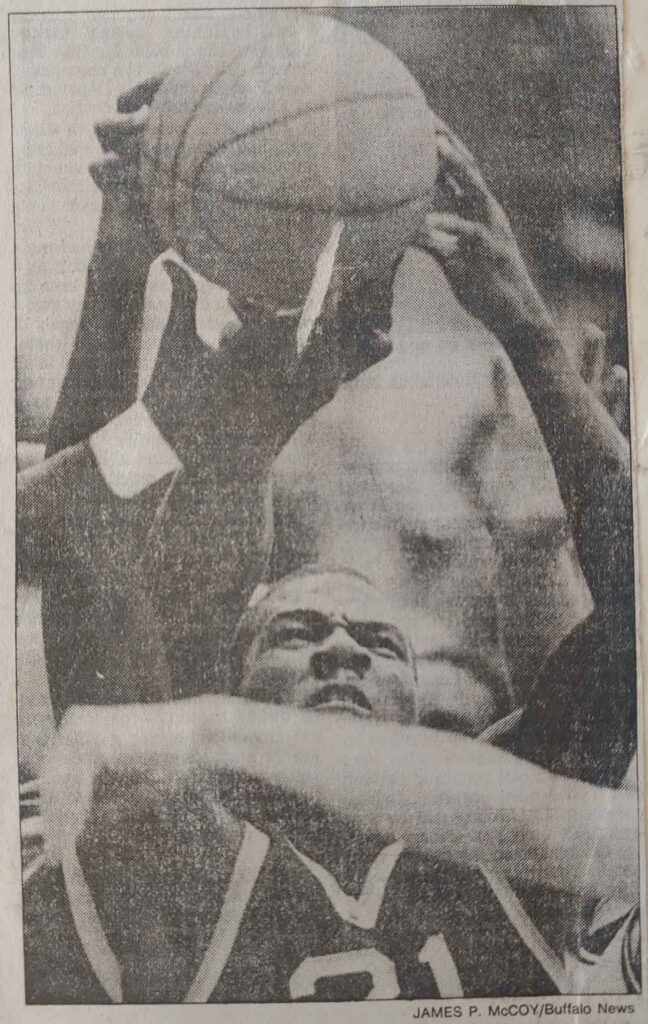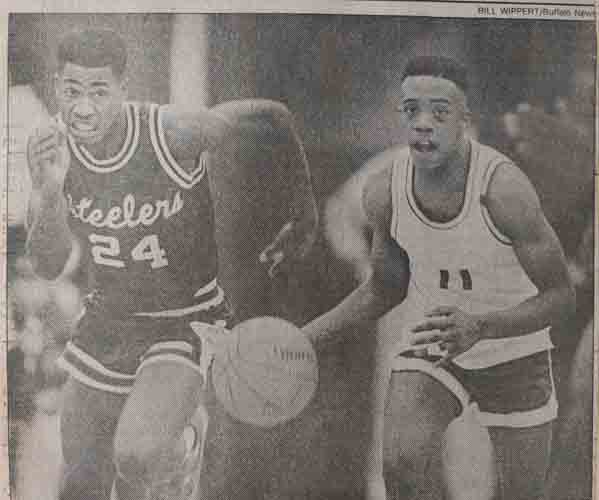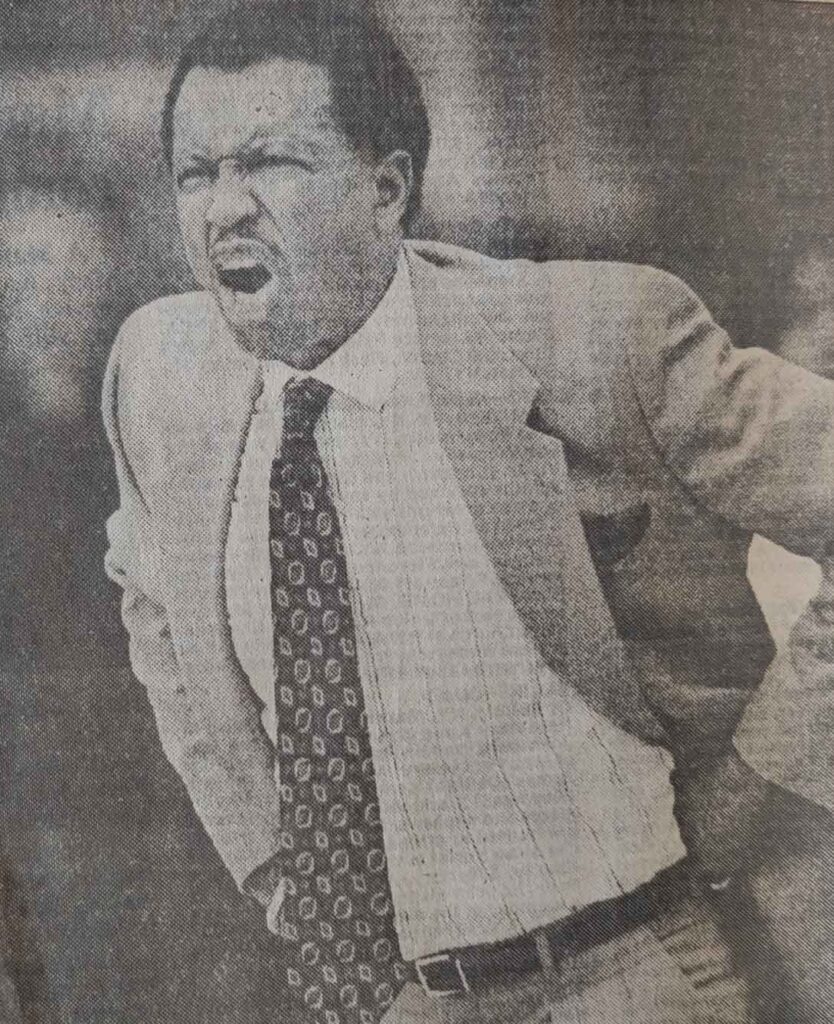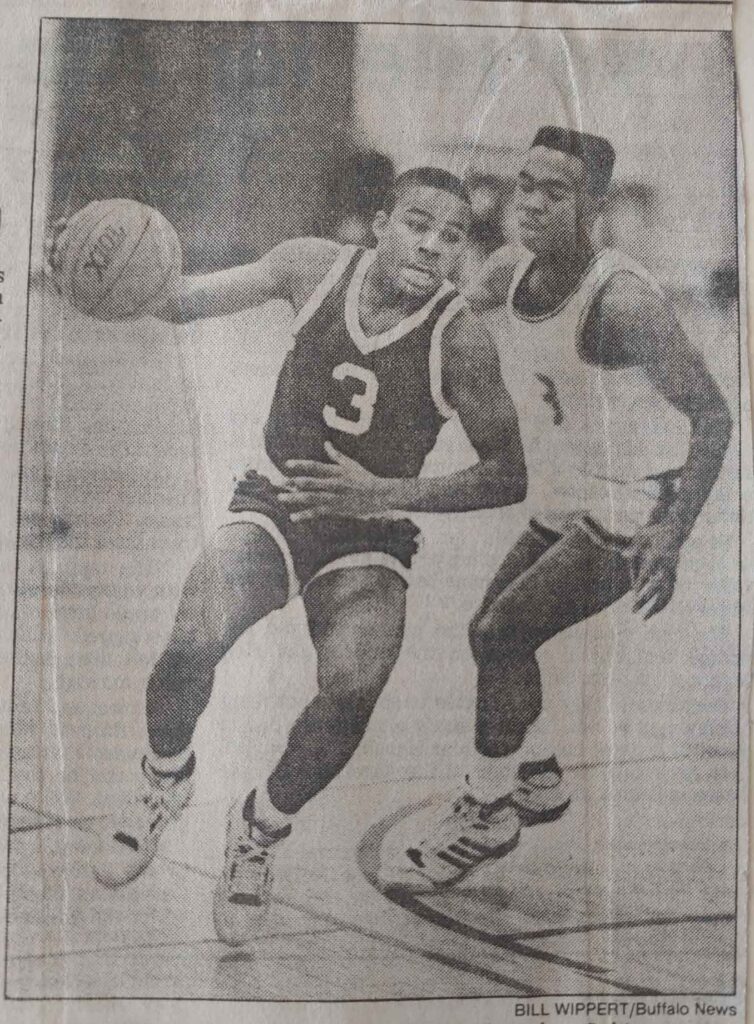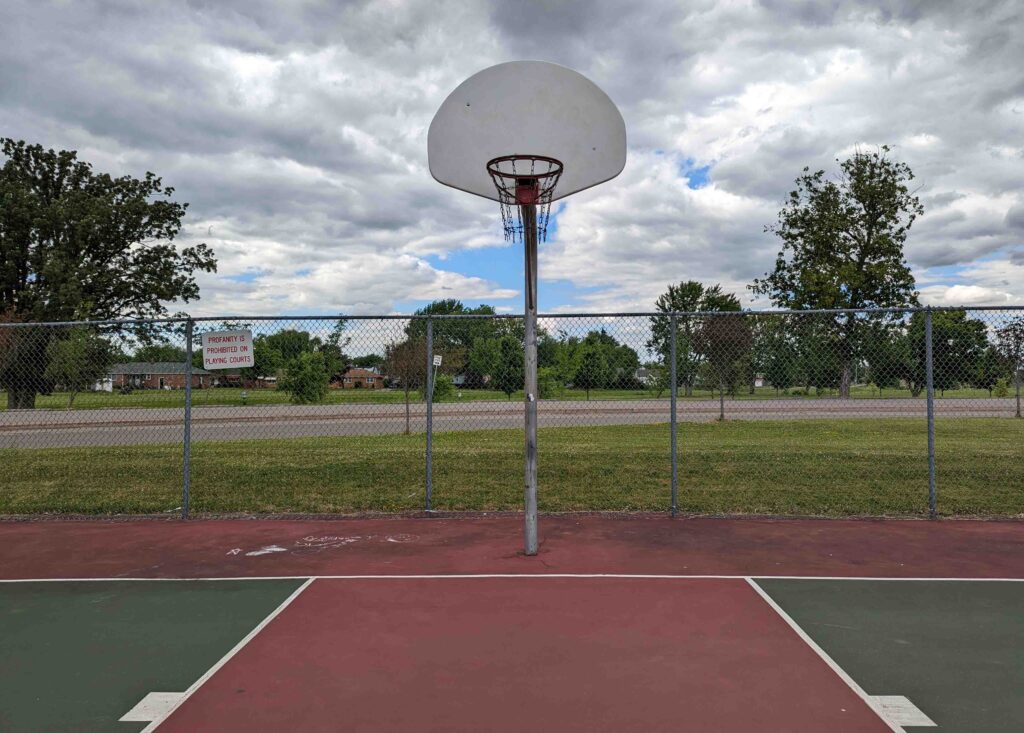
Humorous Basketball Stories
The following are funny quotes from the many contributors to my book project entitled, The Engineers: A Western New York Basketball Story. Telling this story with depth and substance the way I wanted to tell it was truly a team effort. I could not have done it on my own. Telling this story was furthermore a long process. There were bouts of self-doubt where I wondered if this was a waste of time. Each contributor though reminded me in their own way that I was creating something worthwhile and to stay the course. Thank you to all of you.
My story (and the contributors’) had high points and low points. There were likewise many humorous memories, reflections, and stories shared during our discussions. To further promote The Engineers: A Western New York Basketball Story, I thought it would be fun and worthwhile to share some of the funny excerpts from my 40 interviews. Please note that while real names are used in this offering, many will be changed in the final book to protect. This will be to protect the privacy of those who did not agree to participate.
Context and a Disclaimer
The excerpts below are from a few of my interviews and I decided there was room left in this piece for more discussion. For context, I added commentary underneath each quote to give insight into what was said. I hope you get a chuckle out of some of these as I have. And to the contributors, thank you all again. I finally want to give a disclaimer as the creator of this content. Some of the stories shared below are a little bit on the edge and reflect the emotions and memories of the interviewees. Thus, while I am sharing these stories, they do not necessarily reflect my views. The images used throughout this are likewise from a variety of sources. Thank you to everyone who shared your materials and pictures. Best regards and yours in good sports!
Adrian Baugh, Player, Buffalo Traditional High School
“Those schools were not even a match for us. It was not the Section VI schools, but the Section V schools from the Rochester area that were the issue. I think every year we would just clown John F. Kennedy (JFK). JFK was usually our opponent in the overall Section VI Class C final. Newfane? We smacked them!”
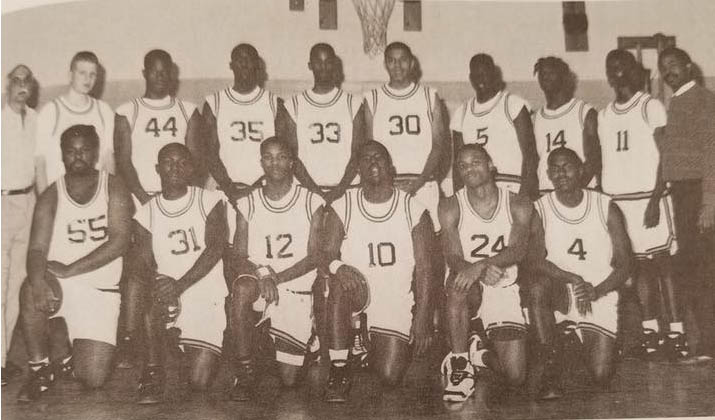
No. 30 Adrian Baugh was one of the unsung heroes on the Jason Rowe– and Damien Foster-led Buffalo Traditional Bulls teams in the early 1990s. The Bulls put strangleholds on the Yale Cup and the Section VI Class C playoff bracket for a four-year stretch. Adrian shared that he and the Bulls were not concerned with the Section VI Class C schools, especially those from the suburbs like JFK and Newfane. Their true competition was from Section V (the Rochester area) in the Far West Regional, and any team they faced in Glens Falls.
Carlos Bradberry, Player, LaSalle Senior High School
“Oh, I was pissed off and Coach Monti made a point of it too. He would play mind games with us to piss us off. He would say, ‘Look at this guy. He’s got ‘DA MAN’ on the back of his head!’ I was ready to go nuts just when I saw him. I was thinking this dude thinks he’s really THAT GUY! I got enraged before the game because we were all sitting in the stands watching the game before ours and he’s laying down sleeping in the stands! I’m going nuts saying, ‘Look at this dude, he’s over there sleeping, and he’s got to play us!’ Everything he did made me go sort of nuts, but he backed everything up though.”
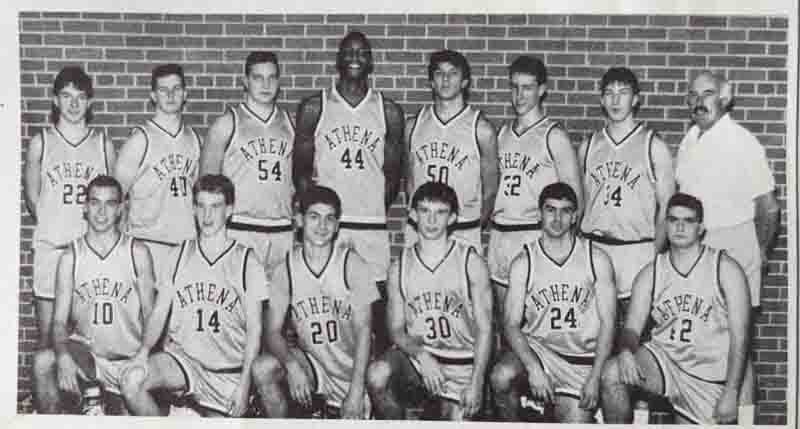
No. 50 Carlos Bradberry was one of the top guards in the LaSalle Senior High School basketball dynasty. He led the first Explorers team that I saw in person during the 1991-92 season. In the 1992 postseason, the Explorers matched up with the Greece Athena Trojans from Rochester, NY. It was the Class A Far West Regional. The Trojans were led by the All-American and Syracuse-bound star No. 44 John Wallace (pictured above and at the end of this piece). Wallace went on to play in the NBA after college. In this excerpt from our interview, Carlos talked about the hype and the perceived disrespect from Wallace leading up to the game. The match up was nicknamed ‘The Meeting of the Perfect Strangers’ as both teams rode into the game 22-0 with a trip to Glens Falls on the line.
*To read the full interview with Carlos Bradberry, see parts one and two.
Curtis Brooks, Player, Hutch-Tech High School
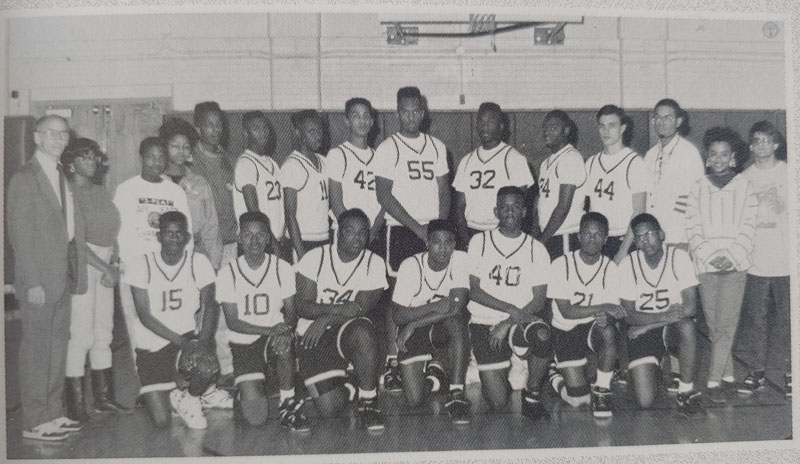
“He always had those damn throat lozenges (Coach Ken Jones). He was hoarse and it was probably because he was always screaming!”
Two of the key figures in The Engineers are Coach Ken Jones and Curtis Brooks. I describe Brooks as the ‘engine’ that drove the 1990-91 Hutch-Tech Boys’ Basketball Team. He led them to a 13-0 Yale Cup record and the overall Section VI Class B Championship. Brooks played under Ken Jones for three years. He was there when Ken Jones took the reins as the head coach. All of Coach Jones’ players remember his hoarse and raspy voice which was the product of his passion for the game. He yelled at his players at practices and in games. He yelled at the officials in the games. One of the characteristics most of his players thus recall about him is his voice. Coach Jones wore many hats and in one-on-one settings, his voice took on more of a patient and grandfatherly tone.
Modie Cox, Player, LaSalle Senior High School
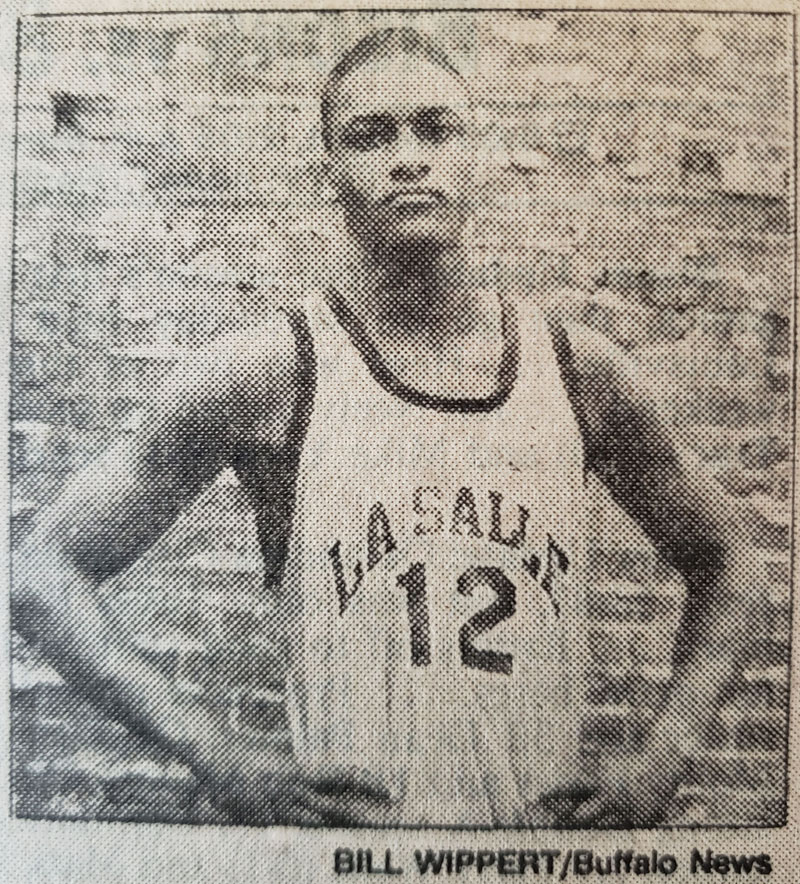
“That was the game he had that bad game in Glens Falls (Eric Gore). Yes I remember that and I was a freshman and I knew I was not playing. I was from the eastside of Niagara Falls. I grew up around drug dealers, prostitutes and hustling, getting over and things of that nature. That was my mentality. As a freshman I was thinking we are out here and I am trying to get some money. You know some guys you can hustle. I grew up trying to hustle because that is what you see all the time. So I felt like I could hustle, so I would hustle other guys. So sometimes I would try to hustle, those guys would beat me and I would be like, ‘Okay I will be right back.’ I would go into somebody else’s room and hustle them out of some money. It is funny. That happened in 1988. That is 30 years ago and Eric Gore remembers that. I am glad Coach Monti did not know that!”
Maurice ‘Modie’ Cox was one the great guards to play in Head Coach Pat Monti’s LaSalle basketball dynasty. I only heard of Modie’s legend and never saw him play like many of the great players in Western New York. Modie was the leader of the LaSalle dynasty between the Eric Gore- and Michael Starks-led 1988 Class B Federation Championship Team and the Carlos Bradberry-led teams of the early 1990s. This excerpt comes from Modie’s visit to my sports YouTube channel Big Discussions76 Sports. It gave the other side of the same story Coach Pat Monti told me about Eric Gore’s tough semifinal game against the Gloversville Dragons in 1988.
*My live interview with Modie Cox is on my YouTube channel Big Discussions76 Sports.
Francis Daumen, Coach, Hutch-Tech High School
“NO, I did not reach them. I am not talking about everybody on the team. The key players were mavericks or renegades if you want to call them that. They were not necessarily bad kids. All of the forces of – On judgment day if the good Lord asks, ‘Why did you yell at all of those kids?’ I will say, I will tell you what JESUS, you sit on that bench and see if it brings the good side out of you! The game by nature brings out the bad in people. You are required to be violent and to be a team player. You are required to run, and hit, and SMASH into one another – to jump and run and to be physically and mentally exhausted – and that is only practice. The games are fun, it is the practices – the day-to-day grind. It is a tough sport!”
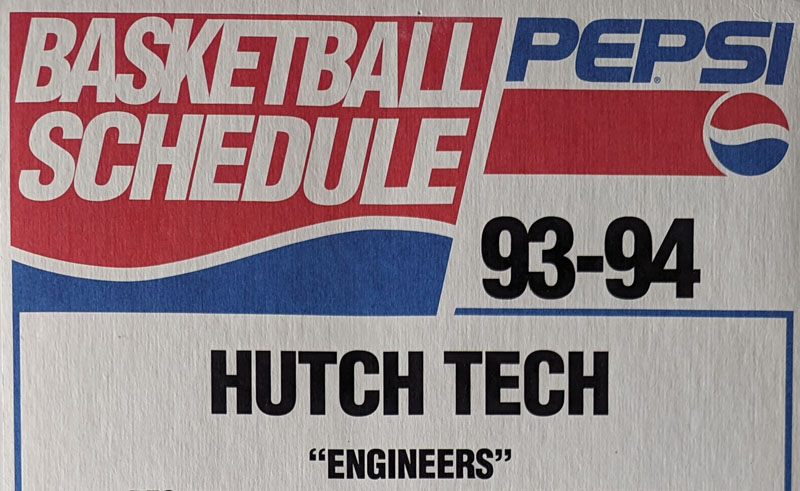
Coach Francis Daumen took over for Coach Jones for my senior basketball season at Hutch-Tech High School. In my chaotic junior year I had to play on the JV team for Mr. Daumen. My circumstances led to my having to play on the JV team as a junior and I did not want to be there. Coach Daumen’s yelling was also different from Coach Jones’ and I did not know how to take it. A team’s energy and environment can change drastically with the head coach. This was the case for our transition on the boys’ basketball team. Coach Daumen’s quote gives insight into how he saw coaching the great game of basketball. As opposed to being an art or a craft, it was battle.
Demoan Daniels, Player, Seneca High School
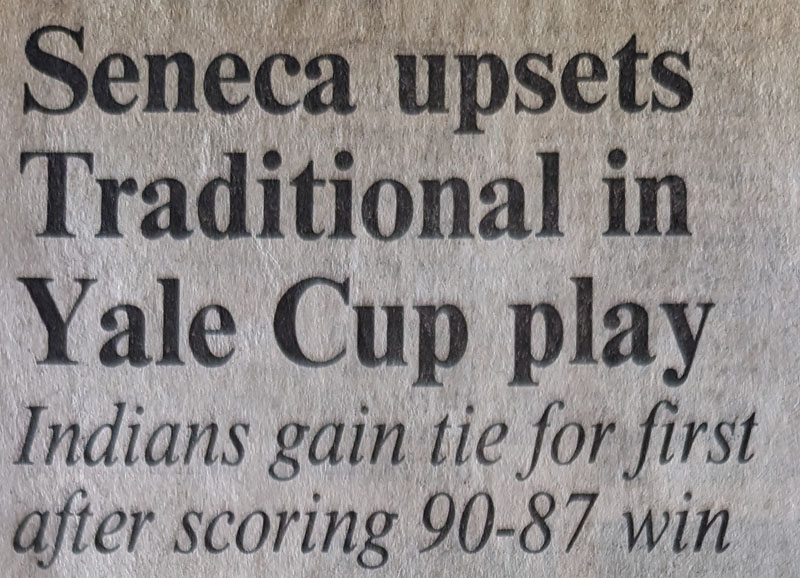
“I think that was the best game that I ever had (against Damien Foster and Jason Rowe’s Buffalo Traditional team). I scored 26 points in that second half. My totals were 35 points and 12 rebounds. I still have the clips. We beat Traditional and we still did not get the respect we deserved. We were going home on the bus and people said, “How many did you lose by?” I looked and I said, “LOSE? We did not lose. We WON!” They said, “You won?” I said, “Yes we won!” Nobody knew who we were. They said, “Well who is this Demoan Daniels dude?” I did not say anything. “Whoever he is, he is putting up buckets,” they said. I did not say anything. My boy Chuck said, “That is him right there.” They said, “That is you? I did not know who you were.” I said, “WELL YOU ARE GOING TO KNOW WHO I AM THIS YEAR!”
No. 32 Demoan Daniels emerged as the leader of the Seneca Indians in the 1992-93 season, his senior year. Daniels gradually ascended as a player in the Western New York high school basketball scene and reached his apex in his senior year. He learned about the complex but exciting world of high school basketball gradually like a lot of Yale Cup basketball players. Demoan put Seneca basketball on the map and helped ascend to heights it had not seen in a long time. His senior season coincided with the rise of Damien Foster, Jason Rowe, and the Buffalo Traditional Bulls. He led the Indians to victory over the Bulls that 1992-93 season. They did not receive the respect deserved immediately after the victory as humorously described in this story.
Dewitt Doss, Player, LaSalle Senior High School
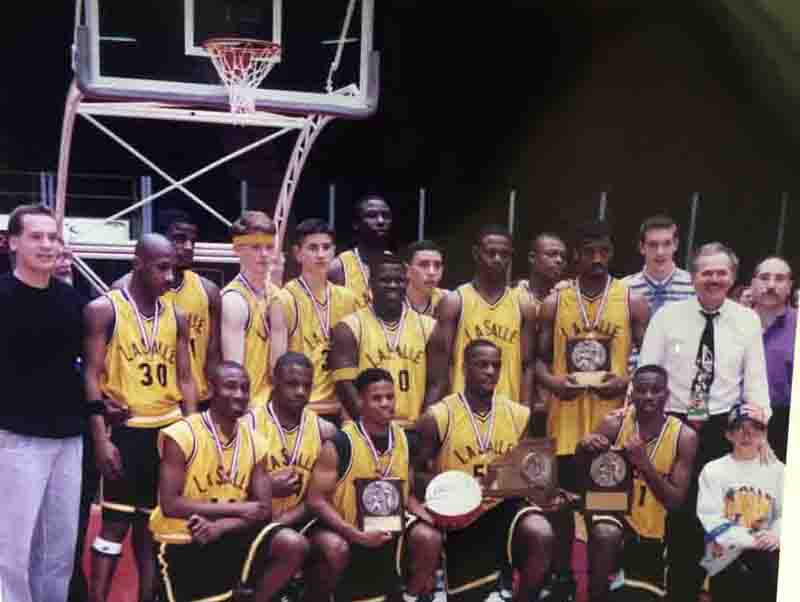
“We would get some shots up, play and workout in the gym. I remember the first time playing against Tim (Winn), and saying, ‘Awe man he can play. I did not know how fast he was and I think I got lucky, crossing him over one time and making a jump shot. Roddy Gayle was in the gym at the time and was just like, ‘OOOOOHHHH!’ He cracked jokes and laughed at Tim at the time (laughing), but he was one of the best defenders I have ever played against in my life. I thought that if I crossed over Tim Winn, then I could do it to any other high school kid. That was going into my junior year of high school.”
No. 11 Dewitt Doss was the last of the great guards in the Niagara Falls LaSalle Senior High School basketball dynasty. He was further on one of the last LaSalle Explorers teams before the school permanently closed its doors in the late 1990s. Dewitt shared how the mentorship from the older LaSalle players was instrumental to his own growth and success as a basketball player in this excerpt. This story involving Tim Winn and Roddy Gayle was one of the funny stories involving the LaSalle basketball players, most of which involved the fierce competitive nature of the program and its players.
Damien Foster, Player, Buffalo Traditional High School

“Well, my understanding back in the day is that the Yale Cup did not even have the three-point line (laughing). Curtis Aiken (of Bennett) and those guys played when there was no three-point line. You play in some of the gyms in some of these schools and it was like you were playing in a bowling alley –.”
Damien Foster and Jason Rowe seemingly burst onto the scene together the 1992-93 season as freshmen. I was amazed by their play when I first saw them. In The Engineers: A Western New York Basketball Story, I describe what it was like playing in the Yale Cup in the late 1980s and early 1990s. During that era, the Yale Cup players and teams played in less than stellar facilities and had meager resources. Most of our jerseys did not have our school names on them for example. Some of the gyms were also abysmal. Damien Foster jokingly recalled in this excerpt that the gym at Performing Arts Academy looked like a bowling alley. It actually did. Buffalo Traditional coincidentally closed and Performing Arts Academy now occupies the former home of the Bulls.
*To read the full interview with Damien Foster, see parts one and two.
Dion Frasier, Player, Hutch-Tech High School
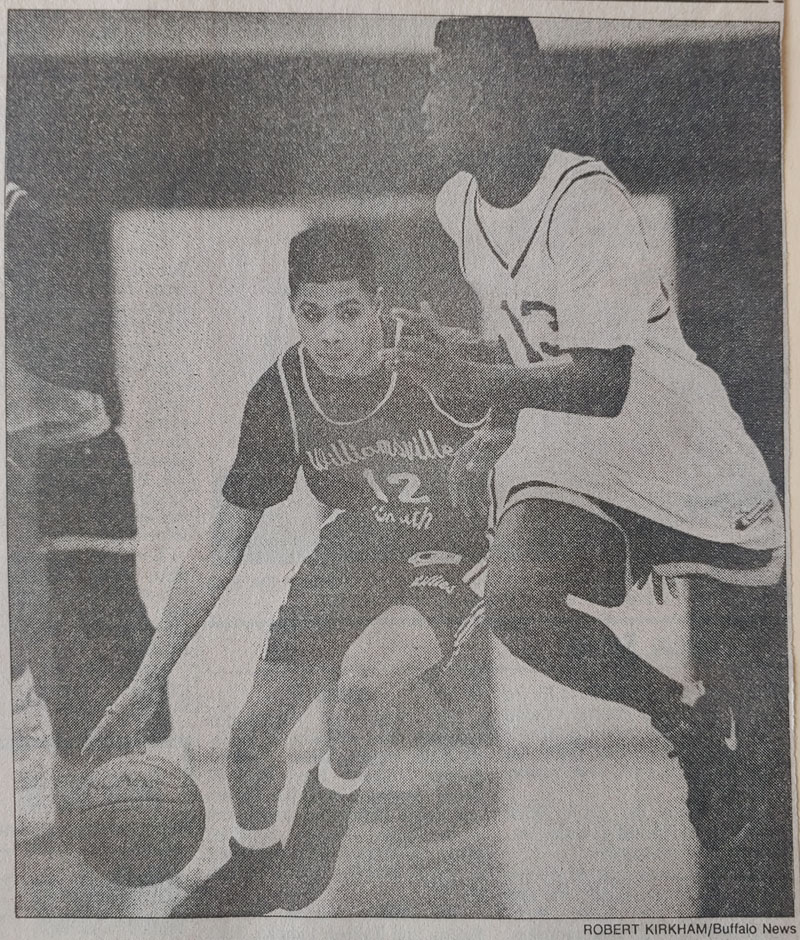
“He was intense and would go off sometimes. He was sometimes a little bizarre. There was one time he was shooting in the gym and I came in and he said something and I started laughing. He said, ‘What are you laughing at? You think I’m a joke?’ He got all in my face and I said ‘dude what is wrong with you?’ Curt was a little – I don’t know what to call him (laughing). He was on the spectrum, I don’t know, but like I said you get him on the court man, that dude could ball. That dude could ball……..”
Reverend Dion Frasier was a four-year player for Coach Ken Jones. No. 24 was a key role player on the 1990-91 Hutch-Tech Boys’ Basketball Team that won the city and the sectional championships. Finally, he was a senior on the 1991-92 team my sophomore year. I did not know the Class of 1991 seniors personally. I initially knew of them only through stories. In this story, Dion reflected on the intensity No. 13 Curtis Brooks played with when they were teammates.
Anthony Harris, Player, Burgard Vocational High School
“I went to Burgard because I followed the idiots to Burgard! Ma was like, ‘Go to Tech. Go to Tech!’ I was like, ‘I don’t want to go to Tech.’ Everybody was going to Tech. Jimmy, Chippy, Squirrel, Brian, everybody, I didn’t know anything about Burgard. I was just going with them. Ma just got tired of me and said, ‘Go ahead to Burgard.’ Come to find out, going to Burgard, Brian changed his mind, Squirrel changed his mind, and it was me, Jimmy and Chippy. Chippy flunked out freshman year. He got thrown out for tardiness and absences, so they let him go. Jimmy left after the first year too, so out of everybody, I was the only one there after one year. And back then after my freshman year, I was tired of this and said, ‘I’m going to Riverside.’ It was overcrowded and I couldn’t get in, so it was back to Burgard again and I was stuck at Burgard. And that is how I got into Burgard.”

A key character in my story is my Uncle Anthony ‘Tony’ Harris. He appears in the beginning and then towards the end. Uncle Tony knew a lot about sports like all of my uncles. I later found that he played a considerable amount of basketball when he was younger and even played a little bit in college. I wondered how having his mentorship would have impacted my own journey afterwards. He had multiple stories to tell about growing up in Buffalo, playing basketball and life in general when I interviewed him. Consistent with his personality, many of them were funny. I knew he went to Burgard but I had no idea about how he got there until our interview.
Ed Harris, Player, Riverside High School
“We came into Traditional, had that game won. Mush (Damien Foster) shot a fucking shot from half court and the ball bounced in. That was right after one of their players died and so it was an emotional game for them (Cameron Calvin). Cardinal was happy. He met us at the door. ‘COME ON IN 5-0!’ This is what he said when we walked in the building. ‘COME ON IN 5-0. COME ON IN! COME ON IN 5-0!’ This is what Cardinal said as we walked in the door. ‘COME ON IN 5-0! COME ON IN!’ We were waiting for this. We want this one. I had a good game. It was just that half-court shot that won it for them. It was their time, and I think they went on to do great things after that. We went the opposite way and they kept soaring. He knew he had a squad! Cardinal knew that he had a squad!”
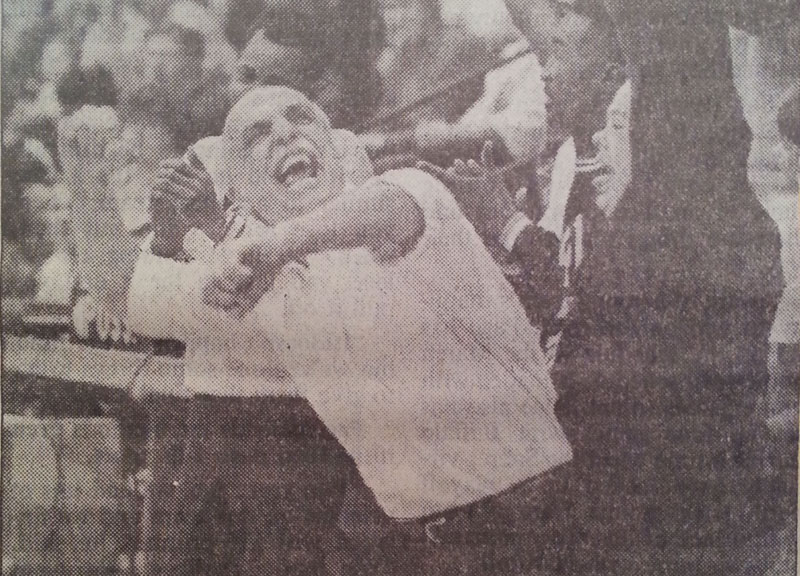
Edmund Harris was one of the key pieces on the Riverside Boys’ Basketball Team that won the 1991-92 Yale Cup and Section VI Class C championships. They had most of their pieces coming back for their 1992-93 senior season. Like many teams in the Yale Cup that season, they ran up against the young Buffalo Traditional Bulls led by No. 33 Damien Foster and No. 12 Jason Rowe and lost on a legendary buzzer beater by Foster. This memory involved the infamous Coach Joe Cardinal of Buffalo Traditional and made me laugh as the interviewer. I think it amused Ed Harris when he reflected on it himself.
Frankie Harris, Player, Hutch-Tech High School
“I remember. Did he used to get out there and practice with ya’ll (Coach Ken Jones)? He would take his shirt off and get in the action with us and play pick up and anything like that. He would tear you up (laughing)!”
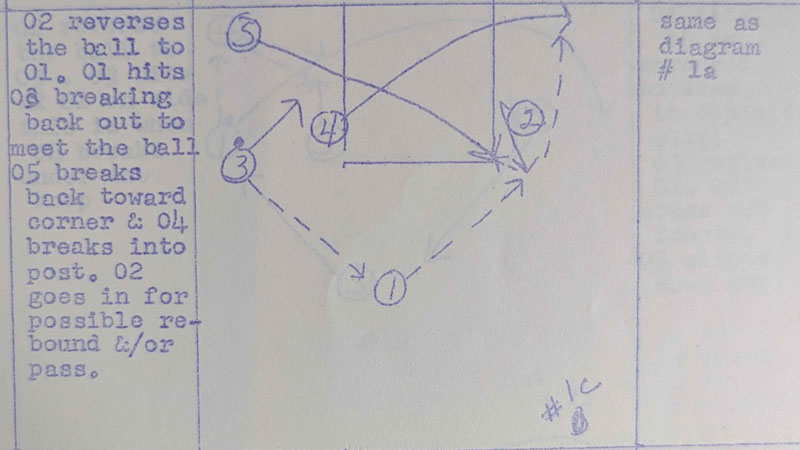
Frankie Harris was a part of Coach Ken Jones’ rebuild of the Hutch-Tech Boys’ Basketball Team. He was a member of the Class of 1990, so I missed him by one year. I saw pictures of him in my brother Amahl’s yearbooks though. When I joined the team, Coach Jones talked to us regularly about ‘Frankie Harris Syndrome’. It involved being too unselfish on offense. Frankie told me his version of where the syndrome came from. We also talked about what it was like to play basketball with Coach Jones who was a physical, gritty and tough player. He would put his body on you for rebounds and use his forearms in the lane. His physical play surprised me initially but eventually you learned that was how he played the game.
Derrick Herbert, Player, Hutch-Tech High School
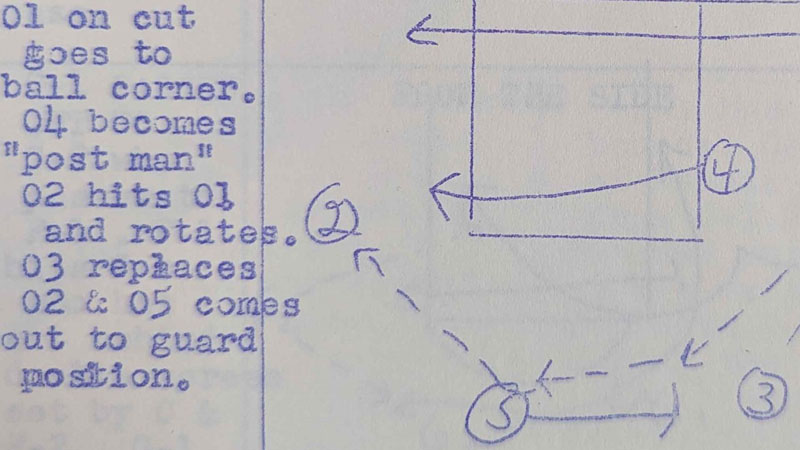
“I mean the voice first. It was raspy and it seemed like he smoked eight packs of Newports (cigarettes) and drank Jack Daniel’s (whiskey). It was just really raspy! You know what I mean? That is how it came off to me. So his commanding voice hits you at first, and then I noticed how good a shape he was in for his age (Coach Ken Jones).”
Derrick Herbert was a player from the Class of 1990 like Frankie Harris. We were put in touch by Pep Skillon shortly after Coach Jones’ passing. In our interview, we discussed a lot of things. I asked him about his first impressions of Coach Jones like I did with all the guys who were there when he took over. Most of us noted his unique physical attributes first, his voice being one of the most notable. He was also in tremendous physical shape in his early 60s.
Earl Holmes, Player, Hutch-Tech High School
“I mess with Adrian every time I see him. I told him, he let you do whatever you wanted to (Coach Francis Daumen). That almost got Calhoun cut our senior year when Coach Richardson took over. Do you know who stopped him from cutting Adrian and Reggie? It was my Dad. He said, ‘I don’t think you want to do that because Adrian could stroke the ball and Reggie could handle the ball!’”
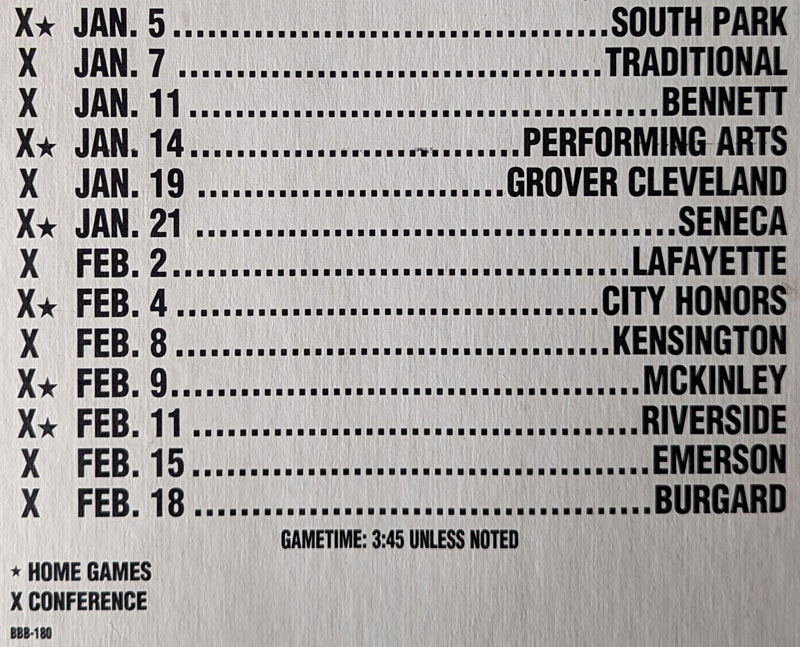
Earl Holmes was a teammate from the Class of 1995. He seemed to really like picking on classmates at times, myself included. Earl always told you what he thought and gave it to you straight. He was the same way 20 years later. Part of our discussion involved reflecting on our 1993-94 team my senior year at Hutch-Tech. That was the year after Coach Jones retired and where Coach Francis Daumen took over. It was a tough year where some unusual things happened. Many of the team dynamics changed. Some things were allowed to fly that would not have been allowed in previous years. Some players were at the center of those changes, and it was very, very reflective of dynamics I and others would see in the adult world in the years to come.
Dr. Kenneth Leon Jones, Coach, Hutch-Tech High School
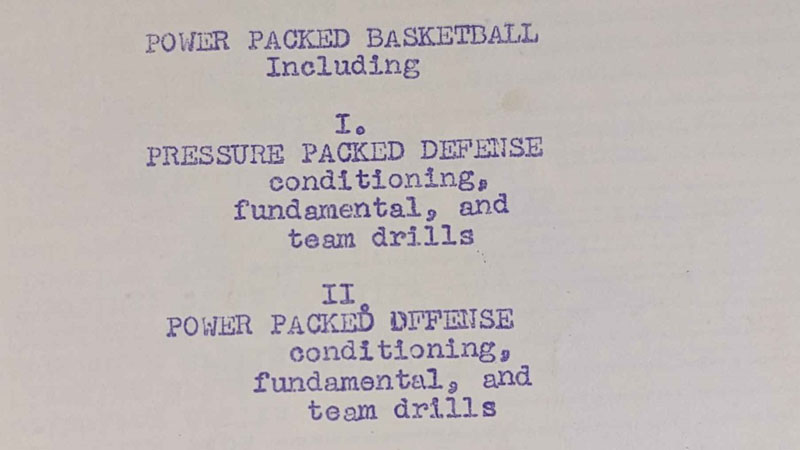
“If you can beat your man one on one, you beat him. When you can’t, then pass the ball! If I say we do not shoot anything except uncontested layups, you don’t force it! Frankie Harris got the award for passing up an UNCONTESTED layup against Grover Cleveland HIGH SCHOOL but it was better than getting the ball SHOVED down your throat (rejected). Getting an uncontested shot is better than getting it driven down your throat! So that is when Brother Brooks was sitting next to me early in that game!”
Coach Jones’ spirit is all throughout this project. We talked about the challenges he experienced when establishing his program at Hutch-Tech High School throughout my research. There was a learning curve for the players on his teams. One surprising example involved No. 13 Curtis Brooks, the engine that drove the 1990-91 Yale Cup and Section VI Class B championship teams. Coach Jones’ story about Brother Brooks involved learning how to run his offenses. The centerpiece of one of his most successful teams had to learn how to play in his program and how to run his offenses.
*See the Engineers book page for more promotional materials discussing Coach Ken Jones.
Pat Monti, Coach, LaSalle Senior High School
“Well what was great was that Sal Rizzo who was the nicest guy you will ever want to meet, God rest his soul – I honestly don’t think he knew a lick about the game of basketball. He had so much talent year in and year out – he should’ve been in the Far West Regionals every year – that’s how talented East High was. He got so ticked off because the score at halftime was something like 17-15. Coach Rizzo came out at halftime and came over to me and said, ‘WHAT ARE YOU DOING? THIS ISN’T BASKETBALL!’ I said, ‘Coach, I’m doing the only thing I can do to give our team a chance to win!’ He said, ‘WELL TWO CAN PLAY THAT GAME COACH!’ And guess what he started doing –. HE STARTED DELAYING THE BALL (laughing)! I said to my assistants, ‘Oh my God! Can you believe this? He’s playing right into our hands!’”

Coach Pat Monti led the Niagara Falls LaSalle Senior High School basketball dynasty to a decade of domination in Western New York. The Explorers won the Section VI Class A championship for 10 years straight and were regular visitors to the Far West Regionals where they matched up with the Class A Champion from the Rochester area. One team they matched up with regularly was the East Orientals. In this excerpt from our interview, Coach Monti discussed the year he attempted to slow the game down to negate the Orientals’ athletic ability and size. Coach Sal Rizzo responded in the most unexpected way by also delaying the ball. He helped create a memorable game with lots of laughs for years to come.
*To read the full interview with Coach Pat Monti, see parts one, two and three.
Phillip Richardson, Player, Bennett High School and Coach, Hutch-Tech High School
“Well, first off. We had our first meeting. We are going to run, run, run. You are going to be in shape and you are going to have to be in shape. So we are practicing and I am seeing Reggie and Adrian do this and that, and Earl trying to do his thing, and trying to squeeze Andre in there. I stopped practice and sat them on the floor at half court. I told them, ‘One of you three motherfuckers, I am going to kick off the team! I do not care who it is! I am just waiting for you all to do something DUMB! What I mean by dumb is that in a game, if I tell you to do something and you don’t do it, that’s dumb and you’re DONE! So from that point in time, they fell right in line and did everything I wanted them to do.”

Coach Phillip Richardson took over the Hutch-Tech Boys’ Basketball Team the year after I graduated. He inherited the highly confident and talented players from the Class of 1995 and brought on his own younger players. New coaches must establish their culture and control over teams whenever they assume the reins and take over. In this funny excerpt, Coach Richardson shared an exchange with his 1994-95 Hutch-Tech Boys’ Basketball Team which had me rolling when he told it to me. I knew the players he referred to well so it had extra significance for me. Under his leadership, they went on to have a great year. Coach Richardson was also my cousin. I did not discover his athletic pedigree until late in my short basketball journey due to family circumstances and dynamics.
Bill Russell, Coach, Riverside High School
“I do not remember. I know he had an interesting life story (Coach Ken Jones). He was out of the school system for a little while and then he came back. That would have been the time that you were with him. I thought he was quite an interesting guy – fanatical but in a good way. And I think he was a fanatic about physical fitness. I heard one story – I do not know where I heard this. He challenged any player on his basketball team, I am thinking about one All-High player, but with one stipulation and that was it had to be a full court game. I do not remember where I heard it, but normally I would say that was ridiculous but not in his case. I think he was just a bit eccentric enough and in great shape where he would go like that. It very well could be true. I do not know, but I heard that.”
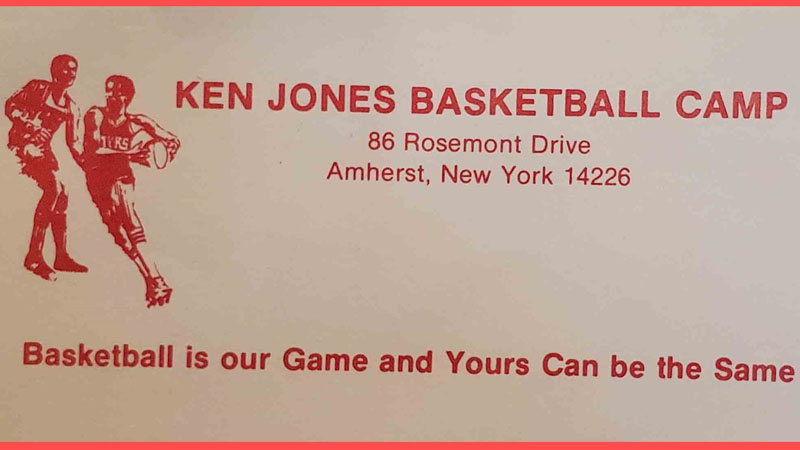
Coach Bill Russell led the Riverside Boys’ Basketball Team in the late 1980s and early 1990s. He coached the legendary Cliff Robinson before starting his college and professional basketball careers. All 14 Yale Cup coaches knew each other or knew of each other. In some instances those relationships were contentious and in some instances they were amiable. In my interview with Coach Russell, Coach Jones came up and he shared this funny story which I vaguely remembered about him. Challenging a player to a full court one-on-one game sounds like something Coach Jones would have done, especially with the remarkable shape he was in for his age.
Jermaine ‘J-Bird’ Skillon, Hutch-Tech High School
“Mike (Brundige) was on the ‘BENCH MOB’ (laughing). We were playing in practice, and we always used to go at his boys, but he hates Mike (Coach Ken Jones). Mike was never getting in. He would get in at garbage time with the rest of the Bench Mob. Like I said he shits on Mike all the time. Mike had a little attitude too, he was a little ass holeley. We go to another gym and Mike does not have a jersey, just a white t-shirt. This is when I knew Jones was full of shit. Pep gets hurt and all of a sudden it is, ‘That a baby Mikey!’ Now he loves Mike! Mike is his man!”
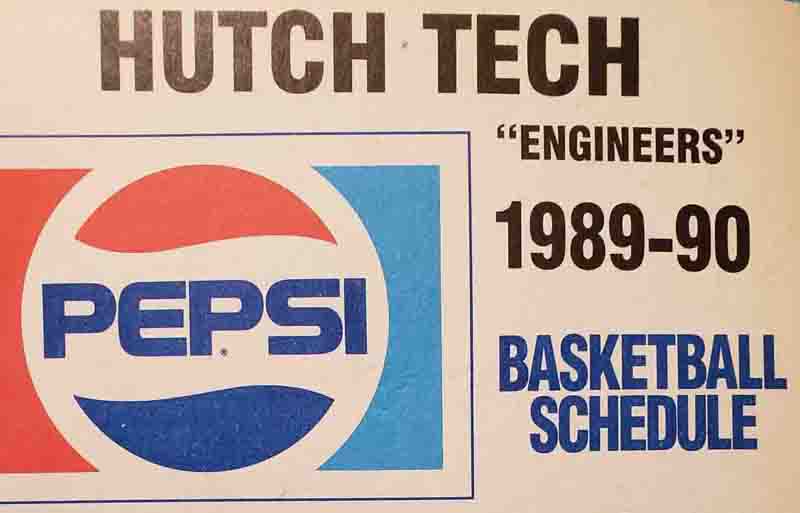
As described in my essay entitled, Lasting Lessons Basketball Taught Me: Different Things To Different People, some of Coach Ken Jones’ biggest detractors were on the bench with him wearing maroon and gold uniforms. I knew that J-Bird Skillon may not have had the most positive experience with Coach Jones but I thought it was still critical to listen to his story. Good writers look to create a balanced perspective.
J-Bird referred to himself and some of the other players that did not play much as the Bench Mob. It was a play on words. Those who are familiar with the West Coast rap scene of the 1990s know that Ice Cube led a rap group called Da Lench Mob. J-Bird also shared something about another player who had a contentious relationship with Coach Jones, the highly talented Michael Brundige. In J-Bird’s account, Coach Jones ended up having to play Brundige late in the 1989-90 season when Jerrold ‘Pep’ Skillon went down due to an ankle injury.
Jerrold ‘Pep’ Skillon, Player, Hutch-Tech High School
“You come up playing in the summer leagues with all of these guys, so a lot of the best hoopers, I knew. They saw the way we warmed up, and we did not just have the regular layup line like everybody else. Jones had other stuff going on, and we were like, ‘What the hell is this? This is crazy! Why can’t we just do a regular layup line?’ So Jones had his little program and it’s funny, he had his dribble, drive, reverse pivot and handoff – and don’t get me wrong, Jones’ fundamentals, to this day, to this day – I learned more from Jones fundamentally than any coach I played for, even college. From the basic fundamentals – drill after drill after drill – no question, I teach kids stuff I learned from Jones. At the time there was pushback. It was like, what is he doing? I mean this is crazy! Why can’t we have just a regular layup line? We never had that, we never did. Everything we had was structured, our layup line was structured, our pregame was structured – structure, structure, structure – like I said he was creating the culture!”
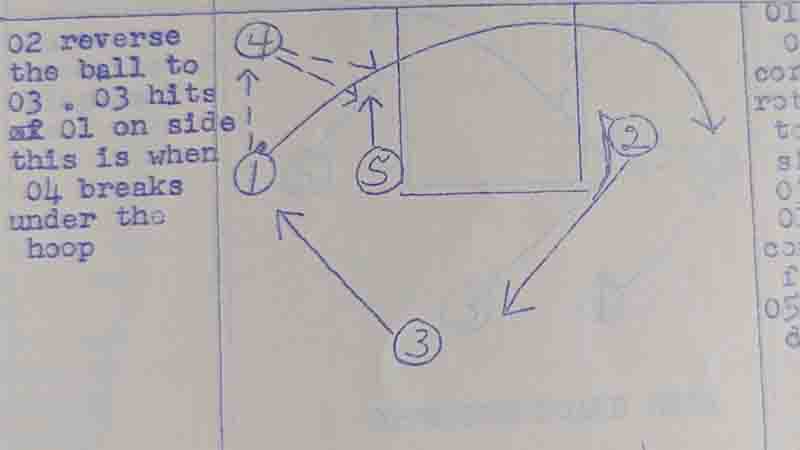
My interview with Pep Skillon was arguably one of the most of fun of them all. Pep was a key piece of the 1990-91 Yale Cup and Class B sectional championship teams. He was a two-sport athlete like his brother Jermaine (football and basketball). You could hear his enthusiasm about those times throughout our discussion. Pep jokingly shared his disbelief when Coach Ken Jones arrived at Hutch-Tech and established his culture and program. Pep played basketball long before being exposed to Coach Jones’ basketball teachings and it was unusual for him and his teammates. Coach Jones was my second basketball coach, so I assumed his methods were typical.
Christain J. Souter, Player, Hutch-Tech High School
“There was one time – I don’t remember the school, but I remember getting on the NFTA metro bus from downtown. I had to walk from the school, walk to the metro and I caught whatever bus that took us to Kensington High School or to Burgard or whatever we were doing that day. And I just remember it was probably my sophomore year, maybe the first time it happened, but I got the, ‘Yo. You the white boy that plays for Tech? You need to come sit back here!’ And you’re on the bus with people you don’t know that you get recognized because you played basketball or you know that you’re the white kid who plays for Hutch-Tech.”
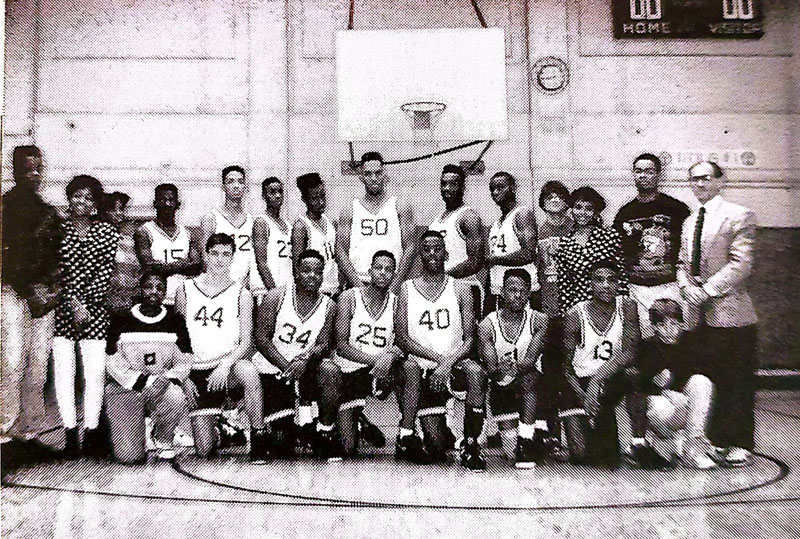
Buffalo and the Western New York area have both a history of racism and segregation as do many cities in the United States. This is discussed subtly in The Engineers: A Western New York Basketball Story. The students in the Buffalo Public Schools system were mostly black when I came of age in the 1980s and 1990s. Our high school basketball teams were likewise mostly black with a few exceptions. No. 44 Christain Souter was one of the captains on the 1991-92 Hutch-Tech Boys’ Basketball Team. In our interview he told a story about a memorable experience on a metrobus on the way to a game. There were in fact a handful of non-black players in the Yale Cup at that time. We laughed about it as it was consistent with what we saw.
Tim Winn, Player, LaSalle Senior High School
“Yep, it is. It always starts at the top. The players these kids look up to – they’re all friends. Kevin Durant and LeBron James are really, really good friends. For me, I could never be that good a friend with someone to where it will impact my approach on the court. It didn’t matter who you were, I wanted to go through you on the court – family included, friends included, it didn’t matter – my MOTHER couldn’t get a bucket on me!”
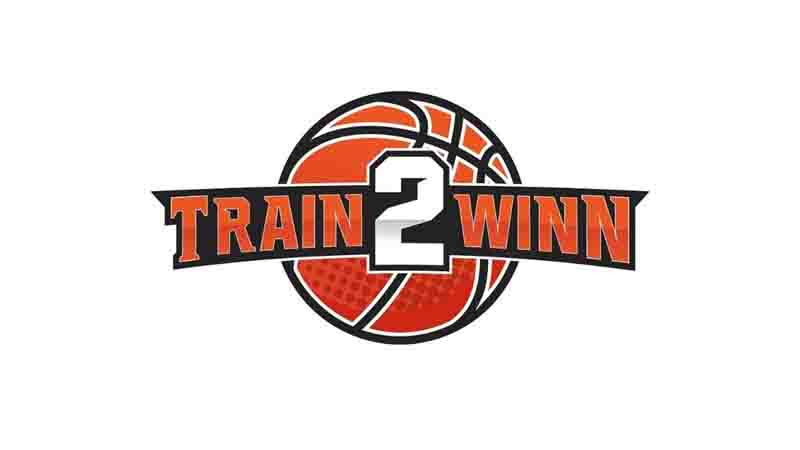
No. 11 Tim Winn is one of the most storied players in the Niagara Falls LaSalle Basketball Dynasty and Western New York basketball. Tim was one of the first players I interviewed and he even returned to my sports YouTube channel for a follow up. In our first interview, we talked about many of the professional layers being friends. I thought about LeBron James, Carmelo Anthony and Dwayne Wade during our discussion as they were the players today’s youngsters looked up to. Tim agreed that many young players are taking their cues from the above-mentioned players and are all friends. Tim jokingly shared that there were no friends for him when it came to the great game of basketball, not even his beloved mother.
*To read the full interview with Tim Winn, see parts one and two. Also my live interview with Tim on my YouTube channel Big Discussions76 Sports.
Bonus- Eric Gore’s Modie Cox Story from Glens Falls in 1988
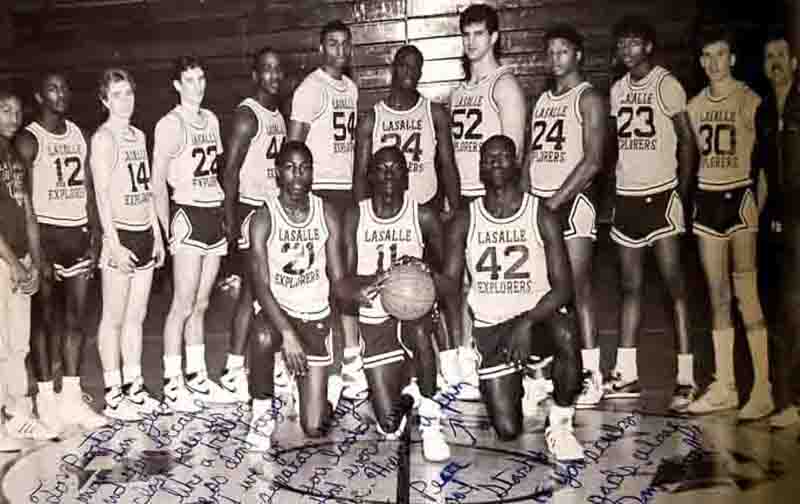
“This guy here (Modie Cox) as a youngster in Glens Falls was brought up from the junior varsity team to support the squad. We as a team were excited but knew we belonged there. This guy would not allow me to sleep for the first game because we started a dice game that went on into the wee hours of the morning. HA, HA. This guy continued to leave my room broke but would return back with a pocket full of paper. I would get that too and this went on until the morning. Needless to say I did not contribute my normal game because of exhaustion. We still won and I knew I could not mess with this dude the following evening. Experiences like this last a lifetime.”
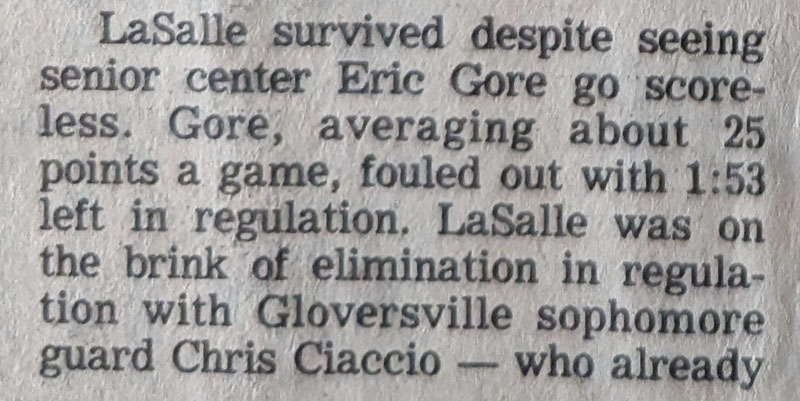
I did not interview Eric Gore, but his name came up in interviews with Coach Pat Monti and players from the LaSalle Senior High School basketball dynasty. No. 50 was one of the key players in the Explorers’ magical 1988 Class B federation championship run. Coach Pat Monti described Eric struggling in the Explorers’ state semifinal matchup with the Gloversville Dragons due to quick whistles by the officials. Gore jokingly attributed it to not getting enough sleep the night before the game years later on Facebook when he saw that I was going to interview Modie Cox on my sports YouTube channel. A mischievous freshman Modie Cox from the JV team kept him up all night playing dice. The Explorers fortunately went on to win everything and go undefeated.
Closing Thoughts and Memories
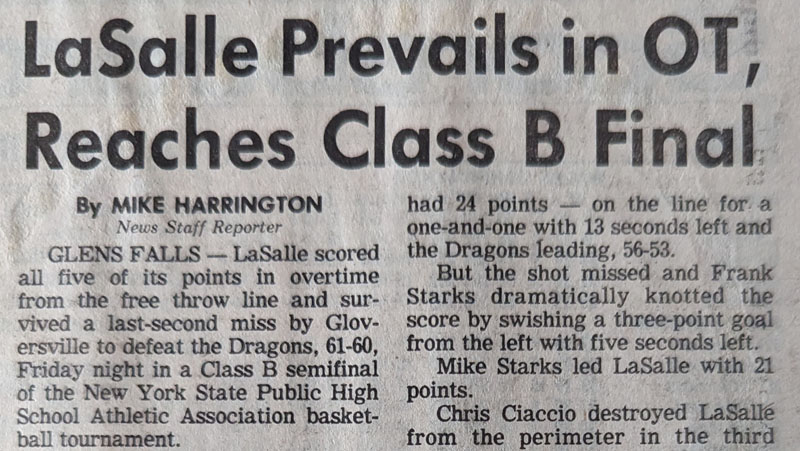
A common saying is, “It’s a small world,” which in many cases is true. Later in the 1990s, I met the mother of one of the players on the Gloversville Dragons team that the 1988 LaSalle Explorers outlasted in Glens Falls. I came to know her well. I first saw a Final Four program with a picture of Coach Pat Monti and the LaSalle Explorers in it. Later on when interviewing Coach Pat Monti, that team came up. That player on the Gloversville team was Robert ‘Bones’ Francis, the son of my stepmother Pam Dunbar.
The opening excerpt/quote for this piece comes from Coach Jones himself. He told us lots of jokes as a team in addition to many basketball strategies and life teachings. He particularly enjoyed the Frankie Harris story. Frankie laughed about it as well when I met him at Coach Jones’ memorial service.
More Promotional Content

Thank you again to the other coaches, players and teammates who shared your stories with me. This project would not have been possible without you. This was a long process, and with each interview I gained the strength to keep going, and resolved within myself that I was doing the right thing.
I have created other promotional/teaser pieces for The Engineers: A Western New York Basketball Story, both via print and video as I journey through the final steps of completing the book. I created a page here on Big Words Authors to give a background of the book and grouping together all the promotional pieces such as this in one place for interested readers.
There are interviews with some of the most accomplished Section VI players from my era on my first blog, The Big Words Blog Site. Those interviews are with Jason Rowe, Tim Winn, Carlos Bradberry and Damien Foster. I also interviewed legendary LaSalle Head Basketball Coach, Pat Monti. Finally, there are several other basketball-related essays related to my book project. If you liked this piece, please share it on your social media and leave a comment beneath this piece.
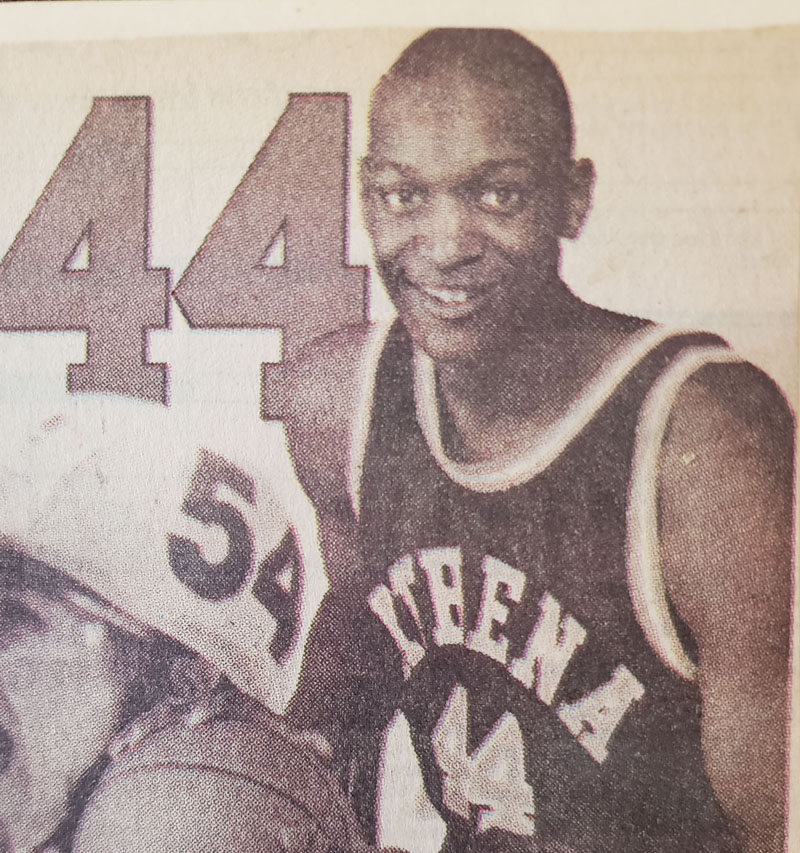
The Big Words LLC Newsletter
For the next phase of my writing journey, I’m starting a monthly newsletter for my writing and video content creation company, the Big Words LLC. In it, I plan to share inspirational words, pieces from this blog and my first blog, and select videos from my four YouTube channels. Finally, I will share updates for my book project The Engineers: A Western New York Basketball Story. Your personal information and privacy will be protected. Click this link and register using the sign-up button at the bottom of the announcement. If there is some issue signing up using the link provided, you can also email me at [email protected] . Best Regards.
